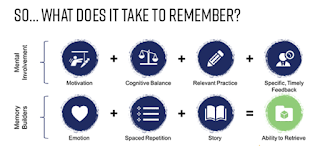Photo by Jonathon Young on Unsplash
PART I
If my camera was good enough, this could have been my picture last night. The night skies are amazing here and it's peaceful to sit outside once the sky is dark and the temperature drops a few degrees. The summer has hit with a vengeance and most days are over 40oC so I hibernate inside. A card arrives, more reminders of the night sky.
Card: Sarah Honeychurch 2018
Kevin does some night sky wondering:
Charlene's writing includes rabbit holes and that was one that I was just in. Leaving the night skies behind I move to my lodestone at the moment which is my assignment for H818 The Networked Practitioner.a digital poem for those long nights of wonder ... #MoDigiWri pic.twitter.com/M9dImQIKIj— KevinHodgson (@dogtrax) December 28, 2018
PART II
My assignment impacts the way I see things, the way I filter my Twitter feed, my intentional searching, and the paste to hold the fragments together. I read a blog post which I wouldn't use in my academic writing (as it is most likely to be skewed towards the company product and the base references are not strong) but provides food for thought.
'Our brains are wired to forget things.' (Learning and Remembering Equation)
The Knowledge Guru. 2017
I'm involved in designing a program for teaching adult learners how to operate a metal 3D Printer which is unique (claimed world-first) in its technology to provide fast metal prints. Read more here. In particular, I'm focusing on the troubleshooting aspect and using some sort of 'reality' (Augmented Reality is the most relevant but also the most expensive) activity in the learning design. The main thing is to avoid the 'wow' factor of using this technology. From my readings, it can be most effective when used for activities that would benefit from repeating, can use mobility and use the interest factor for an activity that would appear mundane. To incorporate the timely feedback, some sort of game could be introduced and I'm thinking a choose your own adventure type of activity. Including a narrative aspect can also encapture emotion and perhaps some motivation. I believe that troubleshooting is a particular mindset that some people find easier than others. It is more than 'google-the-answer', as it needs correct terminology and for the 3D printer it will need scientific and manufacturing expertise as well. The importance of the ability of the student to retrieve this information can be compounded by the urgency of error in operation. This reminds me of the First Aid training I had this year. Certain aspects of the 'troubleshooting' for real scenarios could have benefited from some technology (fake blood at least!). Now my task is to chunk up the troubleshooting aspects, choose the one best suited for Augmented Reality, teach myself how to do that and prepare a presentation of the final solution!



Comments
Post a Comment